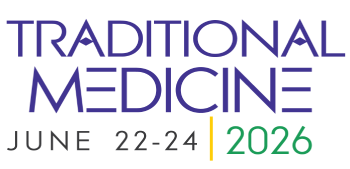Title : Birds in the treatment recipes of certain pathologies by the Gouro traditional healers of the Marahoue region, west-central Cote d'Ivoire
Abstract:
Background: Traditional medicine is one of the most common practices in most African countries. It is generally in line with the use of plants in the treatment of several cases of diseases and infirmities. As for the fauna, studies on their use in this medicine are still very insufficient. This is the case of birds whose use in treatments is still poorly documented. The present study aims at providing an overview of the use of fauna in general and in particular, that of avian species in traditional pharmacopoeia among the Gouro people of the Centre West of the Marahoué region in Côte d'Ivoire.
Methods: Data were collected from 1146 people in 19 villages in the Marahoué region over eight months, from August 2010 to December 2010, and 15 months, from February 2012 to April 2013, through a semi-structured questionnaire and informal conversations.
Results: In total, organs from 44 bird species from 17 families of nine orders are used in traditional medicine among the Gouro of Marahoué. Accipitridae is the most represented family with 23% of specimens followed by Phasianidae (11%) and Hirundinidae (11%). This list of birds includes two species classified as vulnerable (Aquila rapax and Bycanistes cylindricus) and one species classified as near threatened (Stephanoaetus coronatus), according to the IUCN red list. These birds are used in various ways in the treatment of 12 cases of disability and pathology. The disability that has the widest spectrum of treatment is fracture, which can be treated with 12 different species of birds. It is followed by three other pathologies with 9 different species of birds each; these are epilepsy, meningitis and respiratory diseases (Asthma, Bronchitis and choking).
Conclusion: Birds have several therapeutic properties that are very useful for traditional pharmacopoeia. They are valuable aids in the treatment of several pathologies by village communities. The documentation of ethno-medicinal animal species will help to promote further zoochemical and pharmacological research to identify the different active principles contained in the different organs of these birds and eventually develop new drug prescriptions.
What will audience learn from your presentation?
- 44 species of birds from 17 families of nine orders are used in traditional medicine among the Gouro of Marahoué
- The most represented families are Accipitridae (23% of specimens), Phasianidae
- (11%) and Hirundinidae (11%).
- Three threatened bird species are used in this medicine, they are Tawny Eagle Aquila rapax (Temminck, 1828) and Brown-cheeked Hornbill Bycanistes cylindricus (Temminck, 1831) which are classified as Vulnerable and Crowned Hawk-Eagle Stephanoaetus coronatus (Linnaeus, 1766) which is Near Threatened according to the IUCN Red List.
- The infirmities and pathologies that have the widest spectrum of treatment by birds are fracture (12 different bird species), epilepsy, meningitis and respiratory diseases (9 different bird species).
- Pathologies such as Asthma, Bronchitis and choking are treated by the same species of birds.
- It is followed by three other diseases with 9 different species of birds each
Benefits and interest:
These data provide new lines of inquiry that other researchers could use to develop their research or teaching. This study provides a practical solution to the problem of insufficient information on alternative treatments for some diseases. Thus, these results could simplify or make more efficient the work of drug developers in directing their research on the pharmacological analyses of the organs indicated by these people.




